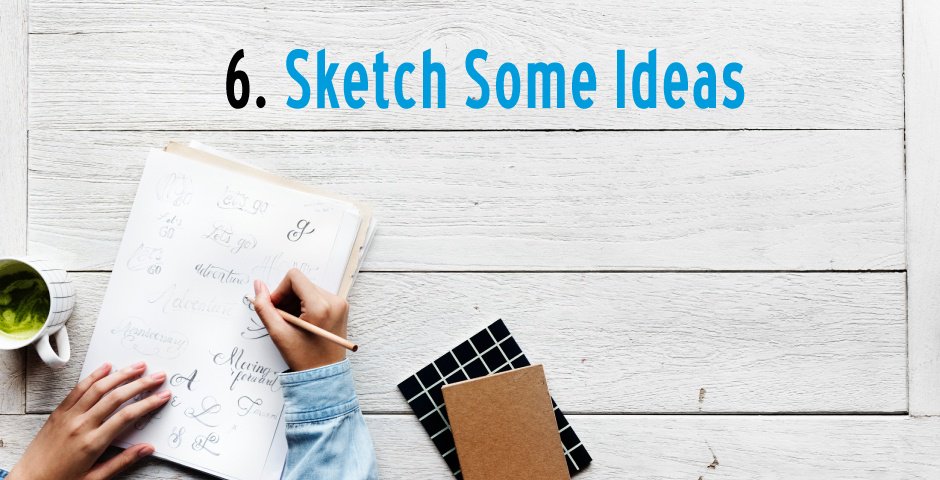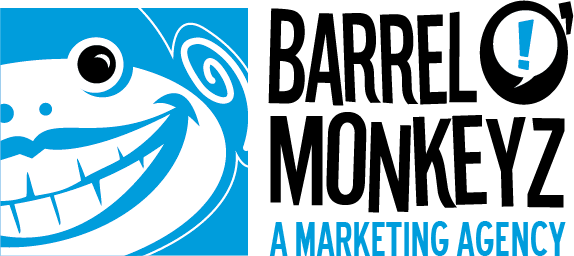If you’re a graphic designer or in the marketing biz, you’ve probably had a client or two ask, “How difficult can it be to design a logo?”—as though designing a logo is just an afterthought to whatever branding work you’re doing for them. No big deal.
Designing a logo—the right logo for your business and your brand—is a big deal. Your logo is essentially what consumers equate with your brand whenever they hear your company name or use your products or services. It’s an icon designed to capture your brand story and your brand image all-in-one, to communicate to your target buyers in a way that captures their attention and (hopefully) their hard-earned money. It’s also the first impression many people have of your brand. That makes it important.
Here are some tips of how to go about getting the logo that’s right for your brand and your target buyers.

1. Have a Pro Design It
You may know someone who’s pretty handy with Adobe Illustrator. It might even be you. But that doesn’t make you a graphic designer or a brand expert. A professional will not only be able to walk you through the process of creating a logo, he or she will also be able to create the kinds of files necessary so that your logo artwork will work on various platforms, such as traditional print, the web, and high-def. Trust me, you won’t get all you need by pasting together a few basic shapes in MS Word. A pro will also keep up on the latest dos and don’ts from a design and technology standpoint, and you’ll go to market with a design and a look that will work both for your brand and your target audience.
2. You Get What You Pay For
Hiring a pro doesn’t mean finding and using an online source of quick and easy cookie cutter logos. There are thousands of such outfits on the web. What’s that saying, “If it sounds too good to be true, it probably is?” I’m a big believer in “you get what you pay for.” Don’t be one of those business/brand owners who spends $100 for a run-of-the-mill logo from an online vendor and then ends up stuck with substandard artwork and a design that seemed great at the time but is never quite the right shape, size, or color you need. Hire a pro (see #1 above). You’ll spend more, but it will be worth it.
3. Know Your Brand
One of the first places to start with logo design is to capture in words all that your brand stands for: your brand values, persona, tone, and company culture. While this might seem like an odd way to start, creating what is called a design brief not only helps you articulate your own brand story, it gives you a document to share with your designer/team so that everyone involved is (literally) on the same page. Aside from capturing the essence of your brand story, you’ll also want to detail any design elements that you want or don’t want, to include ideas on colors, typography, and design styles. While you want your logo to stand out from the crowd, don’t be afraid to see what others are doing. You don’t ever want to copy, but understanding what others are doing (or not doing) can help you generate ideas.
4. Know Your Audience
While we like to think our brands and associated logos are all about our businesses, that’s not really the case now, is it? As with all marketing, it’s really more about our target buyers and what resonates with them. When you’re considering the look and feel of your logo, don’t forget the audience you’re trying to attract. How does their age, gender, income levels, education, profession, and other demographics affect design? In other words, the logo you’d create to appeal to 21-year-olds is likely to be quite different from a design intended for 50-somethings.

5. Pick a Type
Logos come in many shapes and sizes, but there really are only three basic types: abstract symbols, type or font-based, and representative images/illustrations that depict what your brand is or does. What type of logo is right for your brand? That depends. If you know your brand (see #3) and know your audience (see #4), then you have a good idea of what style will best communicate who and what your brand is, and what style your target buyers will find most appealing. Keep functionality in mind, too. You’ll want to be able to use your logo in multiple ways (print, web, business cards, t-shirts, etc.). Is it scalable? Can it be used with or without type?
6. Sketch Some Ideas
Words conjure images in our minds (think Rorschach test). That said, using the words you came up with to describe your brand, sketch some ideas out by hand. While it helps, you don’t have to be an artist to complete this step. This is mostly about free association. When you hear your brand name or words used to describe it, what images pop into your head? Have fun with this step. Nothing is off limits. You may also want to do this as a team exercise within your organization to get a range of ideas that you can share with the designer you hired or utilize the services of said designer to generate and share ideas for your consideration.

7. Colors Matter
There’s a psychology to colors. In a survey cited in the Smallbiztrends.com article How to Use the Psychology of Colors When Marketing, close to 85 percent of buyers claim color is a primary reason when they make a purchase. What does your corporate color palette tell your target buyers about your brand? For example, green is often associated with tranquility, nature, and the environment. Red makes people feel anxious and is often associated with danger, action, or excitement. Blue is often used to provide a sense of reliability and peace, while black is usually associated with authority, power, and strength. Aside from the feeling you are trying to convey, your colors also need to be functional: Do they reproduce well online or in print? Will they be legible on a screen, t-shirt, or business card? Generally, you’ll want to keep your color palette clean and simple, using no more than three colors.
8. Fonts Matter
The font you choose to accompany your logo is almost as critical as color. You’ll want to avoid the kinds of standard fonts that every middle-schooler can use on his or her school project (such as Arial, Times Roman, etc.). Nothing will make your logo look sicker than a font that’s overused. Again, we go back to the basics. What font best supports your brand persona and/or appeals to your target buyers—serif, non-serif, or something modern or traditional. Is the font legible? What will it look like in print, on a screen, or on a t-shirt? There are literally thousands of fonts to choose from—too many really—and a professional designer can help you make an intelligent choice.
9. Refine Your Ideas
When you’ve got some ideas you like, have your designer flesh out several of your favorites, using different color combinations, sizes, and typography. This can usually be done in a program such as Adobe Illustrator and shared with you and your team as PDFs. How many options are enough? You’ll usually want at least three to choose from. Fewer than that doesn’t offer much of a choice, while too many is often just that: too many to choose from.
10. Run Your Ideas by Stakeholders
When you’ve narrowed your choices, your still not quite ready for prime time. Remember, creating the right logo is that important. You’ve taken your time and have been thoughtful about this every step of the way—so far—so don’t fumble on the one-yard line. Run your favorite (or favorites) by a focus group of stakeholders. You’ll want to get buy-in from your internal audiences as well as external audiences, such as customers or members of your target audience. Which design(s) do they like and why? What are their reactions, and are they reacting the way you expected? How does the logo make them feel, and are those feelings consistent with the feelings you want your logo to convey?
TAKE THE NEXT STEP
We’re not all designers, and that’s OK. You’re good at running your business, and we’re good at designing things—like your brand-new logo!
Let Barrel O’ Monkeyz provide a free assessment of your current marketing strategies and designs. We’ll help you answer the question, “Is my current logo and overall approach contributing to my success?”
You can also check out Barrel O’Monkeyz white papers on a range of topics, from social media and inbound marketing and website development, to digital marketing, brand development, and design. Each white paper is full of ideas and steps you need to take to turn your ideas into reality.
LET’S GET CREATIVE
Barrel O’Monkeyz is a San Diego-based strategic marketing agency specializing in Sports and Active Lifestyle markets. We serve as a seasoned, outsourced marketing team for companies looking to ramp up sales and launch new products. Our barrel is full of talent and creative arms ready to prove we don’t just monkey around!

